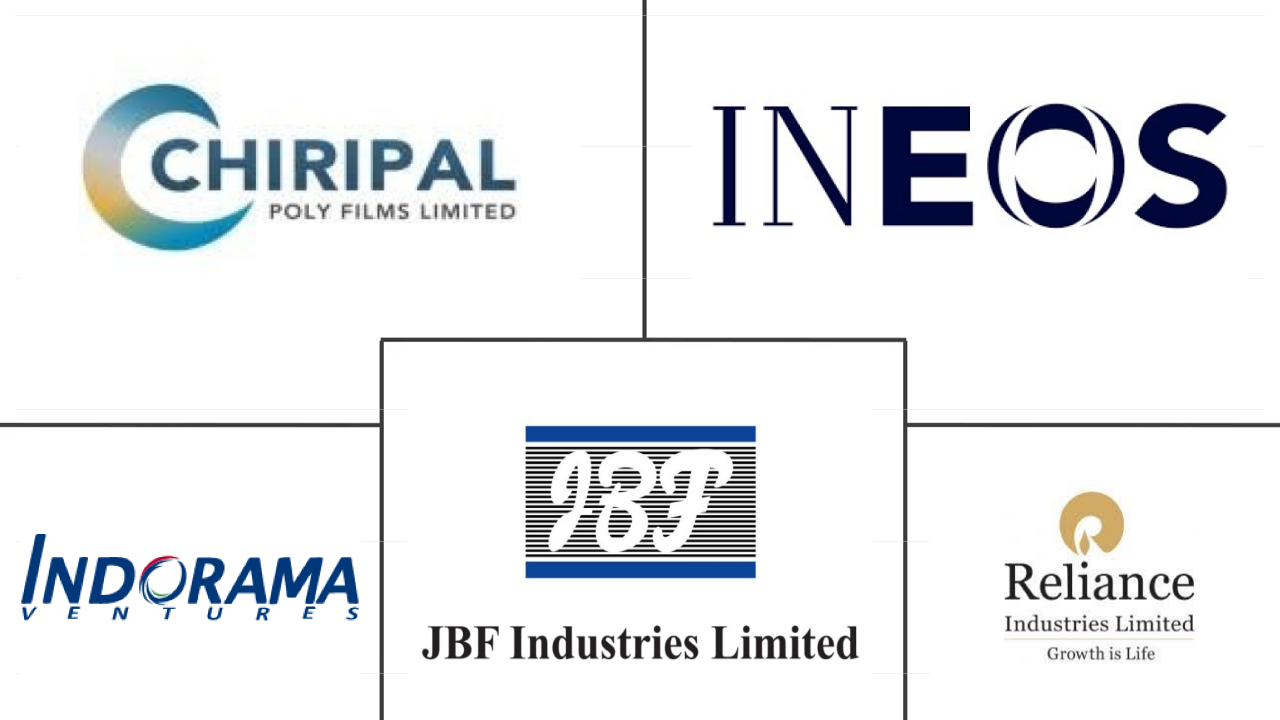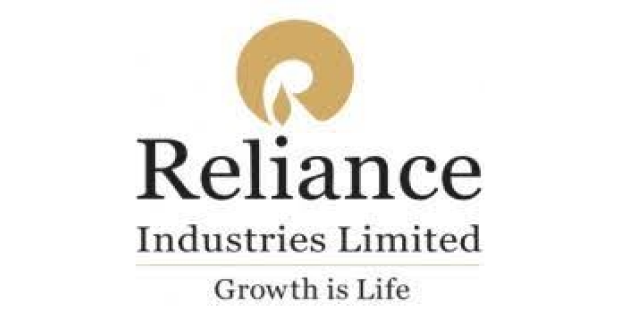Market Size of india engineering plastics Industry
| Icons | Lable | Value |
|---|---|---|
|
|
Study Period | 2017 - 2029 |
|
|
Market Size (2024) | USD 4.36 Billion |
|
|
Market Size (2029) | USD 6.26 Billion |
|
|
Largest Share by End User Industry | Packaging |
|
|
CAGR (2024 - 2029) | 7.49 % |
|
|
Fastest Growing by End User Industry | Electrical and Electronics |
|
|
Market Concentration | High |
Major Players |
||

|
||
|
*Disclaimer: Major Players sorted in no particular order |
India Engineering Plastics Market Analysis
The India Engineering Plastics Market size is estimated at 4.36 billion USD in 2024, and is expected to reach 6.26 billion USD by 2029, growing at a CAGR of 7.49% during the forecast period (2024-2029).
4.36 Billion
Market Size in 2024 (USD)
6.26 Billion
Market Size in 2029 (USD)
5.32 %
CAGR (2017-2023)
7.49 %
CAGR (2024-2029)
Largest Market by End-user Industry
27.35 %
value share, Packaging, 2023
Due to the wide range of applications, including bottles, jars, and containers, specifically in the food and beverage industry, the packaging segment occupied the major share.
Fastest Growing Market by End-user Industry
9.58 %
Projected CAGR, Electrical and Electronics, 2024-2029
The electronics industry is expected to witness the fastest growth due to the properties of engineering plastics, such as lightweight, higher flexibility, and good fire resistivity.
Largest Market by Resin Type
25.96 %
value share, Polyethylene Terephthalate (PET), 2023
With widespread applications in the packaging industry and the rising demand for PET sheets and films, PET resin is the most used engineering plastic in the country.
Fastest Growing Market by Resin Type
10.08 %
Projected CAGR, Liquid Crystal Polymer (LCP), 2024-2029
Due to the increasing applications in the electronics industry, LCP resin is expected to witness the fastest growth.
Leading Market Player
28.10 %
market share, Reliance Industries Limited, 2022

In 2022, with the largest production capacity of around 870 kilotons per year of PET resin in India, the company held the largest market share. Reliance offers various grades for bottles and sheets.
Packaging industry to remain dominant during the forecast period
- Engineering plastics have applications ranging from interior wall panels and doors in aerospace to rigid and flexible packaging. The engineering plastics market in India is led by industries such as packaging, electrical and electronics, and automotive. Packaging and electrical and electronics accounted for the highest market revenue shares of 27.58% and 21.10%, respectively, in 2022.
- Packaging holds the largest share of India's engineering plastics market. The packaging industry in India is flourishing in second-tier cities due to the demand for plastic packaging in launching new products. Domestic and foreign firms are adopting strategies such as joint ventures and partnerships that positively impact market growth. The growth is also primarily driven by the low cost and flexibility of the resins, which also maintain a low-carbon footprint on the environment. India's plastic packaging production had a volume of 4.16 million tons in 2022 from 4 million tons in 2021, at a Y-o-Y growth of 3.97% by volume.
- The electrical and electronics industry is India's most rapidly expanding sector, with the electronics segment contributing approximately 3.4% to the country's GDP in 2021. The government has outlined a strategy to promote the electronics industry and increase its value to USD 17 billion through four PLI (production-linked incentive) schemes for smartphones, semiconductors, design, and IT software and hardware components over the next few years. India's export of electronic goods stood at USD 2,009.07 million in September 2022, with an increase of 71.99% Y-o-Y. These factors are expected to impetus the growth of engineering plastics in the electronics industry, registering a CAGR of 9.42%, by value, over the forecast period in India.
India Engineering Plastics Industry Segmentation
Aerospace, Automotive, Building and Construction, Electrical and Electronics, Industrial and Machinery, Packaging are covered as segments by End User Industry. Fluoropolymer, Liquid Crystal Polymer (LCP), Polyamide (PA), Polybutylene Terephthalate (PBT), Polycarbonate (PC), Polyether Ether Ketone (PEEK), Polyethylene Terephthalate (PET), Polyimide (PI), Polymethyl Methacrylate (PMMA), Polyoxymethylene (POM), Styrene Copolymers (ABS and SAN) are covered as segments by Resin Type.
- Engineering plastics have applications ranging from interior wall panels and doors in aerospace to rigid and flexible packaging. The engineering plastics market in India is led by industries such as packaging, electrical and electronics, and automotive. Packaging and electrical and electronics accounted for the highest market revenue shares of 27.58% and 21.10%, respectively, in 2022.
- Packaging holds the largest share of India's engineering plastics market. The packaging industry in India is flourishing in second-tier cities due to the demand for plastic packaging in launching new products. Domestic and foreign firms are adopting strategies such as joint ventures and partnerships that positively impact market growth. The growth is also primarily driven by the low cost and flexibility of the resins, which also maintain a low-carbon footprint on the environment. India's plastic packaging production had a volume of 4.16 million tons in 2022 from 4 million tons in 2021, at a Y-o-Y growth of 3.97% by volume.
- The electrical and electronics industry is India's most rapidly expanding sector, with the electronics segment contributing approximately 3.4% to the country's GDP in 2021. The government has outlined a strategy to promote the electronics industry and increase its value to USD 17 billion through four PLI (production-linked incentive) schemes for smartphones, semiconductors, design, and IT software and hardware components over the next few years. India's export of electronic goods stood at USD 2,009.07 million in September 2022, with an increase of 71.99% Y-o-Y. These factors are expected to impetus the growth of engineering plastics in the electronics industry, registering a CAGR of 9.42%, by value, over the forecast period in India.
| End User Industry | |
| Aerospace | |
| Automotive | |
| Building and Construction | |
| Electrical and Electronics | |
| Industrial and Machinery | |
| Packaging | |
| Other End-user Industries |
| Resin Type | ||||||||||
| ||||||||||
| Liquid Crystal Polymer (LCP) | ||||||||||
| ||||||||||
| Polybutylene Terephthalate (PBT) | ||||||||||
| Polycarbonate (PC) | ||||||||||
| Polyether Ether Ketone (PEEK) | ||||||||||
| Polyethylene Terephthalate (PET) | ||||||||||
| Polyimide (PI) | ||||||||||
| Polymethyl Methacrylate (PMMA) | ||||||||||
| Polyoxymethylene (POM) | ||||||||||
| Styrene Copolymers (ABS and SAN) |
India Engineering Plastics Market Size Summary
The India Engineering Plastics Market is experiencing significant growth, driven by its diverse applications across various industries such as packaging, electrical and electronics, and automotive. The packaging sector holds the largest share, benefiting from the increasing demand for plastic packaging in new product launches, particularly in second-tier cities. This growth is further supported by strategic collaborations between domestic and international firms, which enhance market expansion. The low cost and flexibility of engineering plastics, coupled with their environmentally friendly properties, contribute to their rising adoption. The electrical and electronics industry, one of the fastest-growing sectors in India, is also a major contributor to the engineering plastics market. Government initiatives, including production-linked incentives, are aimed at boosting the electronics sector, which is expected to significantly increase its contribution to the country's GDP and export value.
The market is fairly consolidated, with a few key players dominating the landscape. Companies like Chiripal Poly Film, INEOS, IVL Dhunseri Petrochem Industries Private Limited, JBF Industries Ltd, and Reliance Industries Limited hold substantial market shares. Recent innovations, such as LANXESS's introduction of sustainable polyamide resins and new compounds for e-mobility applications, highlight the ongoing advancements in engineering plastics. These developments are poised to further enhance the market's growth trajectory. The electronics manufacturing industry, with its expanding production and export capabilities, is a crucial driver of demand for engineering plastics, positioning India as a potential leader in the global electronics export market.
India Engineering Plastics Market Size - Table of Contents
-
1. MARKET SEGMENTATION (includes market size in Value in USD and Volume, Forecasts up to 2029 and analysis of growth prospects)
-
1.1 End User Industry
-
1.1.1 Aerospace
-
1.1.2 Automotive
-
1.1.3 Building and Construction
-
1.1.4 Electrical and Electronics
-
1.1.5 Industrial and Machinery
-
1.1.6 Packaging
-
1.1.7 Other End-user Industries
-
-
1.2 Resin Type
-
1.2.1 Fluoropolymer
-
1.2.1.1 By Sub Resin Type
-
1.2.1.1.1 Ethylenetetrafluoroethylene (ETFE)
-
1.2.1.1.2 Fluorinated Ethylene-propylene (FEP)
-
1.2.1.1.3 Polytetrafluoroethylene (PTFE)
-
1.2.1.1.4 Polyvinylfluoride (PVF)
-
1.2.1.1.5 Polyvinylidene Fluoride (PVDF)
-
1.2.1.1.6 Other Sub Resin Types
-
-
-
1.2.2 Liquid Crystal Polymer (LCP)
-
1.2.3 Polyamide (PA)
-
1.2.3.1 By Sub Resin Type
-
1.2.3.1.1 Aramid
-
1.2.3.1.2 Polyamide (PA) 6
-
1.2.3.1.3 Polyamide (PA) 66
-
1.2.3.1.4 Polyphthalamide
-
-
-
1.2.4 Polybutylene Terephthalate (PBT)
-
1.2.5 Polycarbonate (PC)
-
1.2.6 Polyether Ether Ketone (PEEK)
-
1.2.7 Polyethylene Terephthalate (PET)
-
1.2.8 Polyimide (PI)
-
1.2.9 Polymethyl Methacrylate (PMMA)
-
1.2.10 Polyoxymethylene (POM)
-
1.2.11 Styrene Copolymers (ABS and SAN)
-
-
India Engineering Plastics Market Size FAQs
How big is the India Engineering Plastics Market?
The India Engineering Plastics Market size is expected to reach USD 4.36 billion in 2024 and grow at a CAGR of 7.49% to reach USD 6.26 billion by 2029.
What is the current India Engineering Plastics Market size?
In 2024, the India Engineering Plastics Market size is expected to reach USD 4.36 billion.

